If you buy through our links, we may earn an affiliate commission. This supports our mission to get more people active and outside.Learn about Outside Online's affiliate link policy
The 6 Best Powder Skis of 2026, Tested
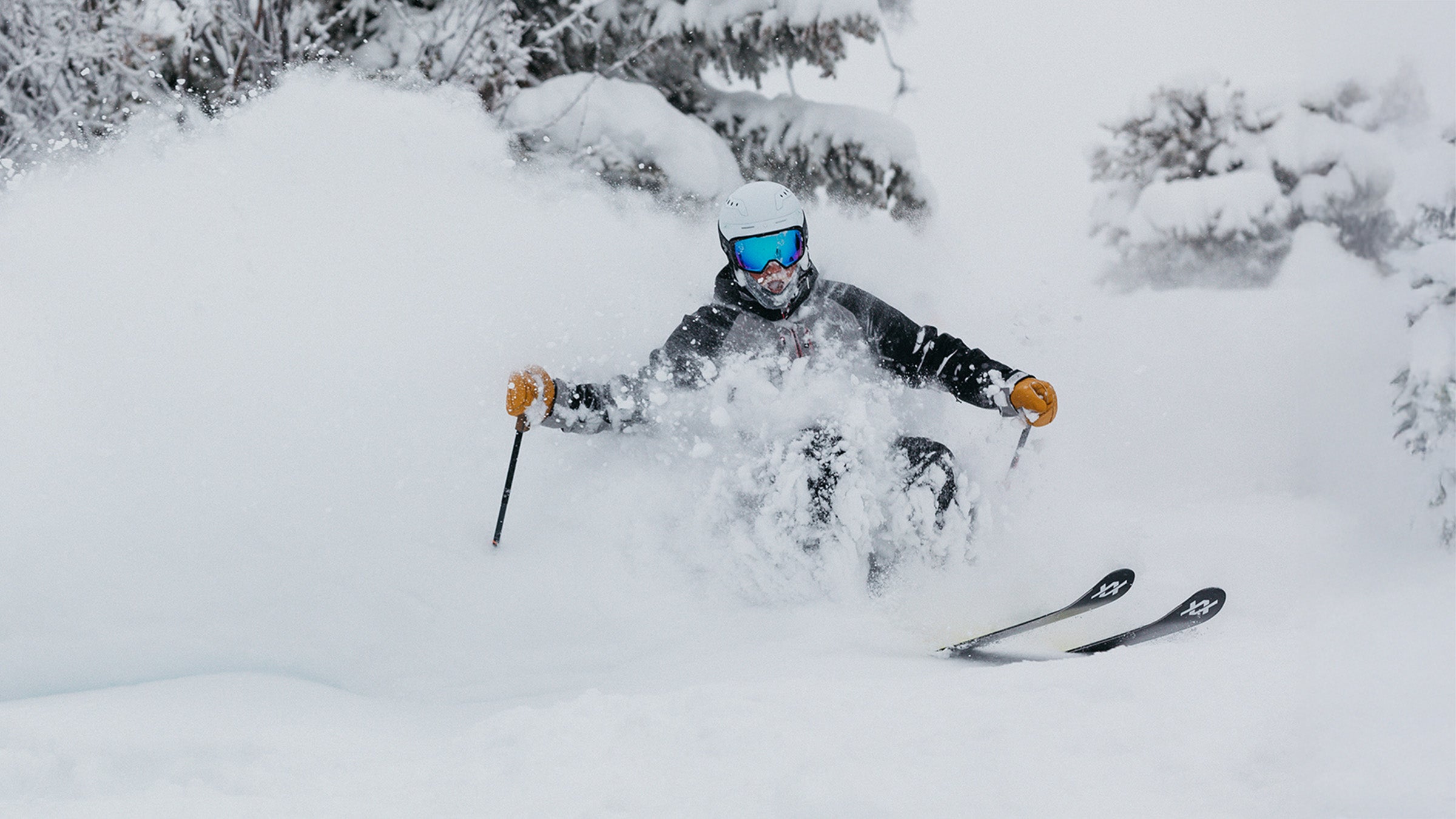
Tester Tommy Flitton enjoys some of the best conditions of his life while testing powder skis for SKI. (Photo: Ray J Gadd)
If there’s one thing that never loses its magic, it’s floating through deep, bottomless powder. We try not to play favorites, but testing the best powder skis on storm days is easily one of the job’s highlights. Last March, our crew spent two days at Montana’s Bridger Bowl chasing face shots and dialing in which skis truly earn a spot on our list of the best powder skis of 2026—the models you’ll want for historic storms, sleeper pow days, and bucket-list trips alike.
This year’s lineup is a mix of updated classics and brand-new models for the 2026 season, ranging from more modest planks with 111 millimeters underfoot to fat, 120-millimeter-waisted boards. It seems brands are leaning into ultra-fat powder skis again—and we’re here for it.
Best Powder Skis: At a Glance
- Best in Test: Atomic Maverick 115 CTi ($850)
- Best for the Deepest Days: Nordica Unleashed 120 ($950)
- Best Women’s Powder Ski: Blizzard Sheeva 11 ($900)
- Most Responsive: Black Diamond Impulse Ti 112 ($900)
- Best for Hard Chargers: Völkl Revolt 114 ($850)
- Most Playful: Dynastar M-Free 112 ($900)
More Powder Skis We Recommend
- Rossignol Sender Free 110 ($850)
- Salomon S/Lab QST Blank ($850)
- Blizzard Rustler 11 ($900)
- Liberty Scope 118 ($850)
- Head Kore 112 Ti ($850)
- DPS Koala 111 ($1,195)
The Reviews: The Best Powder Skis of 2026
Of the 17 powder skis we tested at Montana’s Bridger Bowl, these six stood out as top performers. They earned the highest marks across eight scoring criteria, with especially strong results in flotation and playfulness—the two performance characteristics we prioritize when reviewing wide all-mountain skis. Read more about our testing process here.
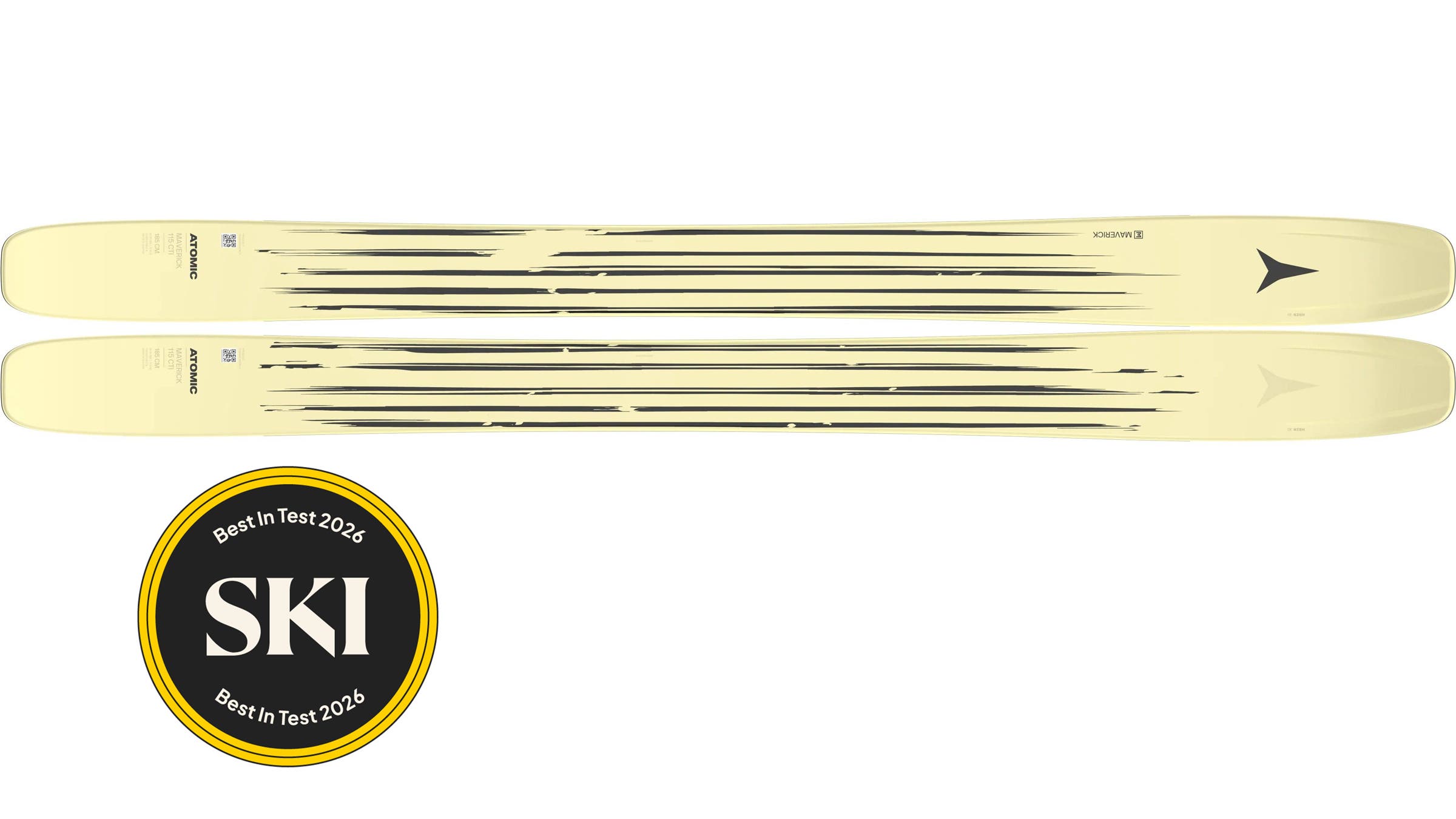
Best in Test: Atomic Maverick 115 CTi
Dimensions: 140.5-115-129.5 (185) mm
Available lengths: 177, 185, 193 cm
Pros and Cons
⊕ Excellent flotation
⊕ Dependable in variable snow
⊗ Lacks a bit of maneuverability
Our favorite powder ski of the year, the Atomic Maverick 115 CTi outperformed all other powder planks we tested thanks to its excellent float, stability in variable snow, and approachability for a wide range of skiers. “This ski was stable, predictable, and easy,” said one tester. “It was always one step ahead of me—it knew where I wanted to go, got there, and then opened the door for me.”
A poplar and ash wood core make the Maverick 115 CTi lively yet smooth, while a combo of carbon and Titanal laminates (that’s what the “CTi” stands for) give it enough heft to be stable and confidence-inspiring even when conditions get tricky. With a 115-millimeter waist and rockered tip and tail, it provided exceptional flotation in everything from heavy powder to light, blower snow.
Though it’s a directional ski, the Maverick still brings plenty of energy and playfulness. “It’s nimble and responsive, but also has some backbone,” said another tester. “It’s like jumping on a trampoline while riding a rocket.” Enough said. Read the full review here.
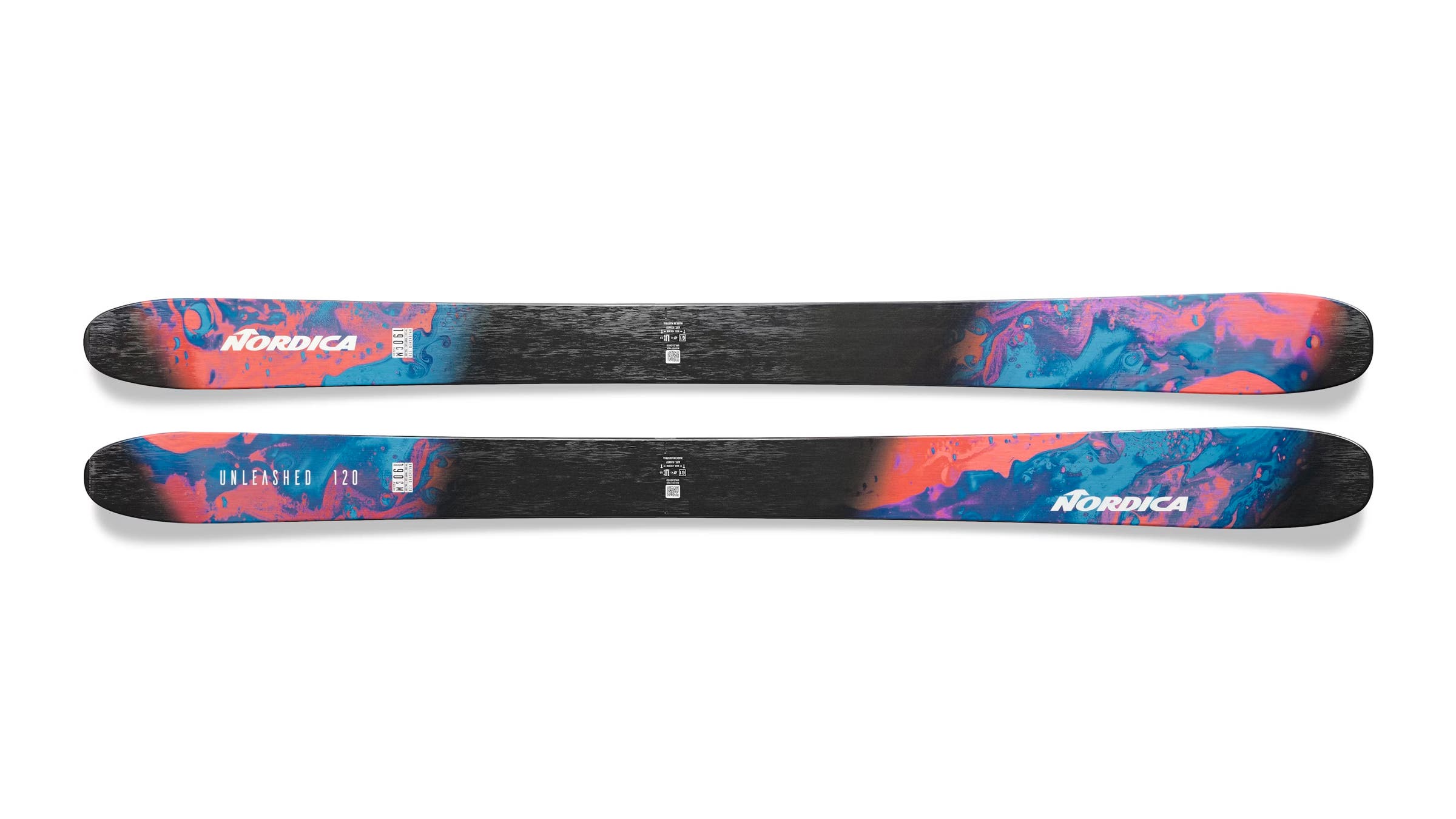
Best for the Deepest Days: Nordica Unleashed 120
Dimensions: 150-120-139 mm
Available lengths: 180, 190 cm
Pros and Cons
⊕ Best-in-test flotation
⊕ Stable at high speeds
⊗ Not great in firm snow
⊗ Best for strong skiers
If you’re reaching for the Nordica Unleashed 120, it’s probably going to be a really good day. With a bodacious 120-millimeter waist—the widest ski in our test lineup—it’s no surprise that the Unleashed delivered best-in-test flotation. What did surprise us was just how maneuverable it felt, and how stable it stayed at speed, especially given its generous tip and tail rocker.
“Solid and dependable, and surprisingly nimble for its size,” said one tester. “The Unleashed gets sideways easily for slashes in the deep stuff, yet holds steady at speed and stays beneath you when straight-lining through chop and moguls below any drop.”
A poplar and beech wood core keeps the Unleashed 120 fairly light for its width, while a single, narrow sheet of Titanal adds stability. “It skied so much better than I was expecting for its size,” said one female tester. “You still need to be strong to get it to turn, but once you do, it’s smooth sailing.”
That said, this isn’t a ski for the faint of heart, and the 120-millimeter waist makes it challenging to stay in control when conditions firm up. The Unleashed 120 demands a confident skier to unlock its full potential, and while it’s an incredible tool for deep powder days, it’s not exactly a one-ski quiver.
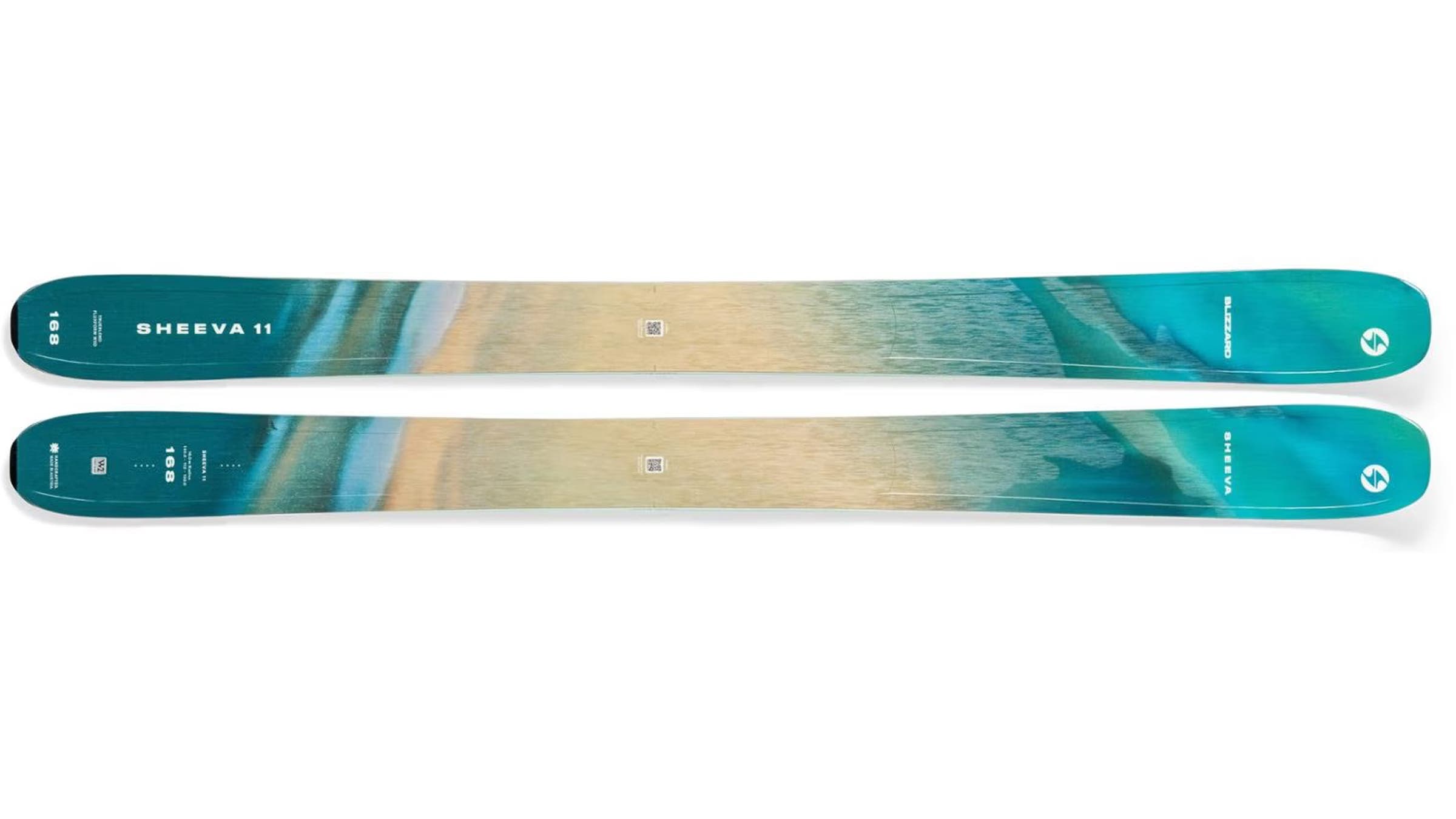
Best Women’s-Specific Ski: Blizzard Sheeva 11
Dimensions: 140-112-130 mm (174)
Available lengths: 168, 174, 180 cm
Pros and Cons
⊕ Dependable in crud
⊕ Stable at high speed
⊗ Not very playful
⊗ Doesn’t float as well as other similarly wide skis
Balanced and precise, the Sheeva 11 reigns as queen of Blizzard’s Sheeva collection—a line of women’s-specific freeride skis born from Blizzard’s Women 2 Women program. The Sheeva line underwent a full redesign last season and returns this season with a fresh graphic and the same rock-solid construction.
The Sheeva 11’s multi-wood core and strategically placed Titanal create a perfect mix of stability and playfulness: damp and stable underfoot, with softer flex in the tip and tail for easy maneuverability. This design makes it a powerhouse in variable conditions, though testers noted that its extra heft slightly limits playfulness and flotation in ultra-light, low-density snow. With a 112-millimeter waist, it still floats well, but the ski shines brightest when driven hard through mixed conditions.
“This is a dependable and balanced ski that gives you confidence in any conditions,” said one tester. “It glides like butter through choppy snow and powder.”
Testers agreed the Sheeva 11 favors advanced skiers ready to push it. “Rippable and chargeable, this ski seems to be able to do it all,” said one tester after a 10-inch storm day at Bridger Bowl.
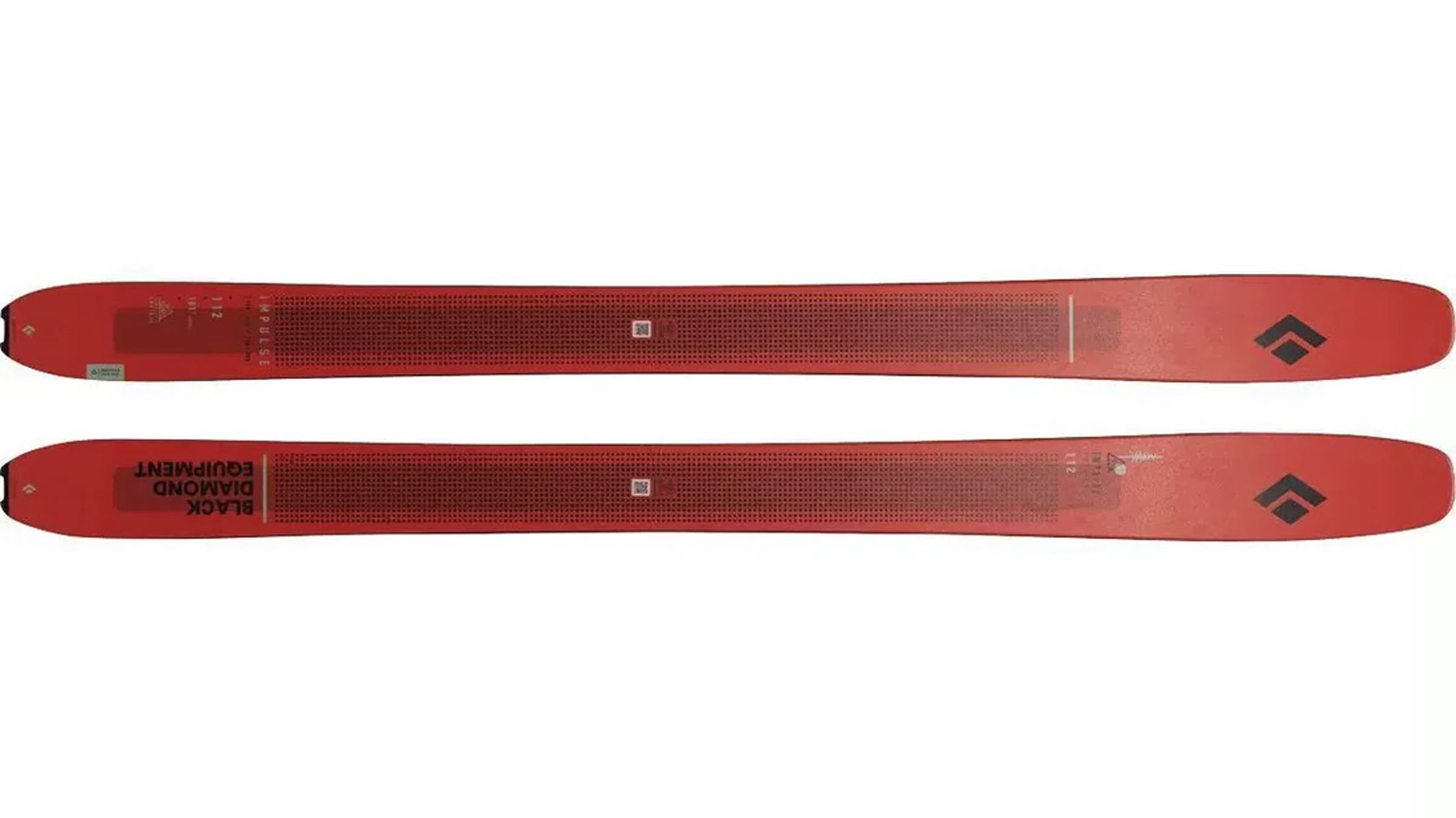
Most Responsive: Black Diamond Impulse Ti 112
Dimensions: 139-112-126 mm
Available lengths: 181, 186 cm
Pros and Cons
⊕ Nimble and responsive
⊕ Approachable
⊗ Squirrely at high speeds
⊗ Not reliable in crud
Playful and maneuverable, the all-new Black Diamond Impulse Ti 112 won testers over with its approachable, intuitive feel. The second widest ski in Black Diamond’s redesigned six-ski Impulse collection (ranging from 98 to 114 mm underfoot), the Impulse Ti 112 pairs a lively poplar wood core with a layer of Titanal for added stability. With a 112-millimeter waist, it offers plenty of flotation without feeling cumbersome, making it a reasonable daily driver for skiers who enjoy consistent snowfall.
“It felt balanced and intuitive,” reported one tester after skiing untouched powder and chopped-up leftovers. “It skis powder really well, and I was pleasantly surprised in bumps.”
Even with the Titanal layer, testers didn’t find the Impulse Ti 112 overly aggressive. One noted that it felt “a bit chattery when the snow got firm or choppy,” making it less ideal for high-speed, steep-line charging. Instead, this ski shines in soft snow and smooth conditions, where its approachable personality comes through. “It’s perfect for a confident, light-footed skier who wants to explore the whole mountain,” said one tester.
The Black Diamond Impulse Ti 112 also makes a great crossover option for those who like to tour. Pair it with a hybrid binding, like the Salomon Shift, and you’ve got a powder-friendly setup that’s light and versatile.
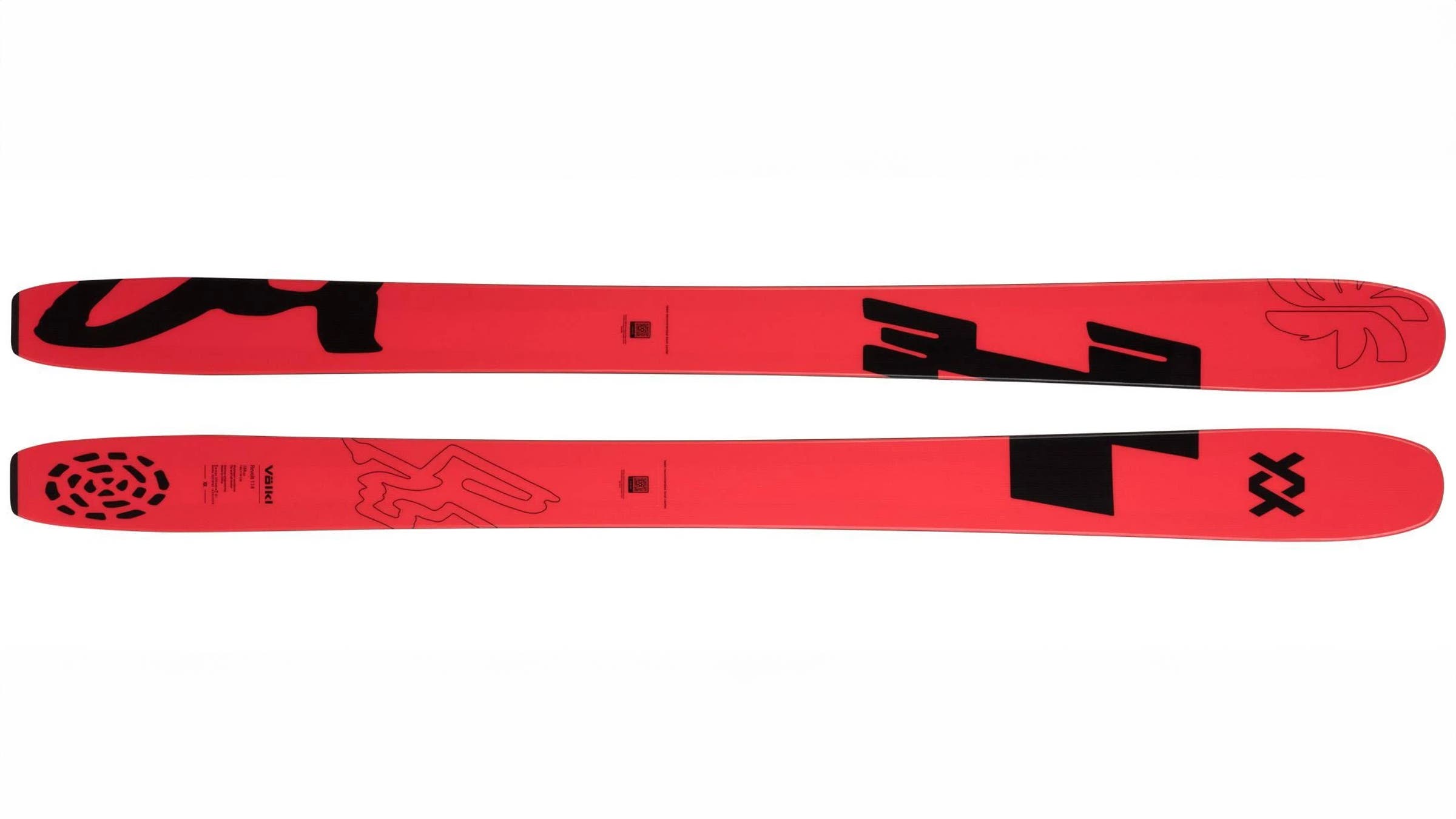
Best for Hard Chargers: Völkl Revolt 114
Dimensions: 146-114-128 mm
Available lengths: 177, 184, 191 cm
Pros and Cons
⊕ Dependable in variable snow
⊕ Can handle high speeds
⊗ Less approachable for novices
⊗ Heavy
The Völkl Revolt 114 is a burly, confidence-inspiring freeride ski that thrives when pushed hard. With a 114-millimeter waist, it’s the second widest model in Völkl’s Revolt collection, designed for aggressive skiers who like to charge big-mountain terrain.
“Inspiring,” said one tester after a morning of ripping through chopped-up powder. “It encourages you to throw a few slashes at the top of the line and then drive hard through the chop. Wanna straight-line and ride the tails? Go for it—the Revolt’s got your back.”
Tip and tail rocker delivered excellent flotation when put to the test in 10 inches of fresh snow, while camber underfoot kept the ski glued to the ground when laying trenches on hardpack. Völkl’s 3D Radius technology adapts the turn shape depending on where you pressure the ski, giving the ski some versatility. While testers found it easy enough to pivot and smear through tight spots, the Revolt 114 was happiest railing high speed freeride turns. “Very little chatter going fast in crud,” reported another tester.
Our testers with competitive alpine and freeride backgrounds loved the Revolt 114’s stability and power, but they cautioned that it might feel demanding for less experienced skiers. The bottom line? “It’s a big, burly ski built to go fast and conquer big terrain.”
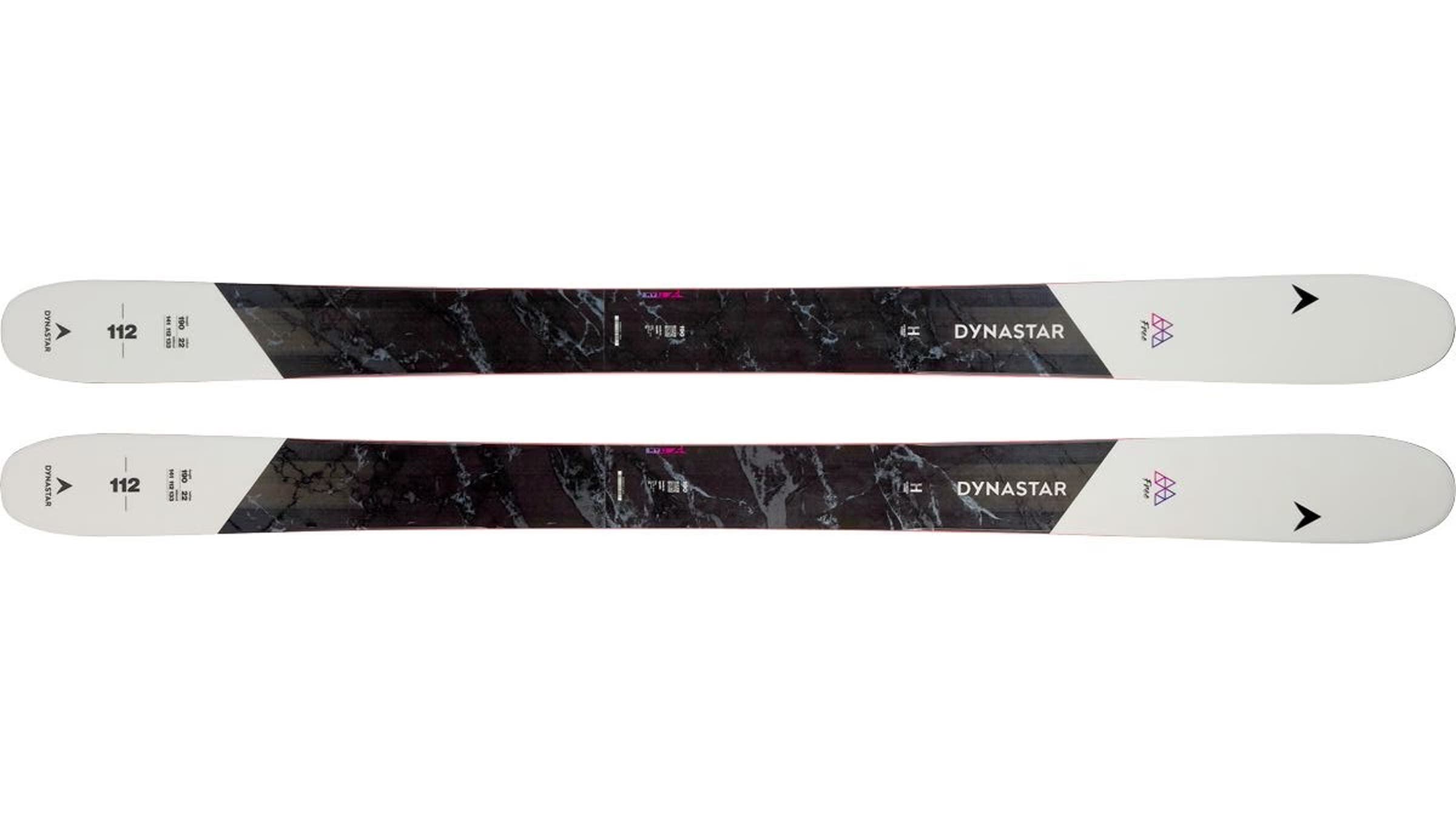
Most Playful: Dynastar M-Free 112
Dimensions: 141-112-133 mm
Available lengths: 176, 183, 190 cm
Pros and Cons
⊕ Playful and nimble
⊕ Responsive in variable conditions
⊗ Not as stable at top speeds
⊗ Not as floaty as others in truly deep conditions
From surfing through wind buff to charging through tight chutes, testers found the Dynastar M-Free 112 to be an incredibly well-rounded powder ski. While it doesn’t float like the Nordica Unleashed 120, its 112-millimeter waist hits a sweet spot for skiers out West—testers felt like it would be a solid daily driver for areas that see plenty of fresh snow, like Wyoming’s Jackson Hole and Utah’s Little Cottonwood Canyon.
Dynastar’s hybrid core—a mix of wood and polyurethane—is light and springy, with plenty of tip and tail rocker and a respectable amount of camber underfoot for precision and control when you need it. The M-Free 112 held up well while blasting through chop, and it also impressed testers with its maneuverability. “It’s a really fun ski that was a blast to slash and throw around,” said one tester. “It pivots on a dime and is so fun to hop around and find airs into tight transitions.”
The Dynastar M-Free 112 isn’t our top choice for all-out high-speed charging, but it impressed with its predictability and user-friendliness—it’s an intuitive ski that strong intermediates to advanced skiers will quickly feel at home on.
More Powder Skis We Recommend
The following powder skis are models that excel in specific areas like quickness or stability at speed, offering strong alternatives for skiers with specific performance preferences.
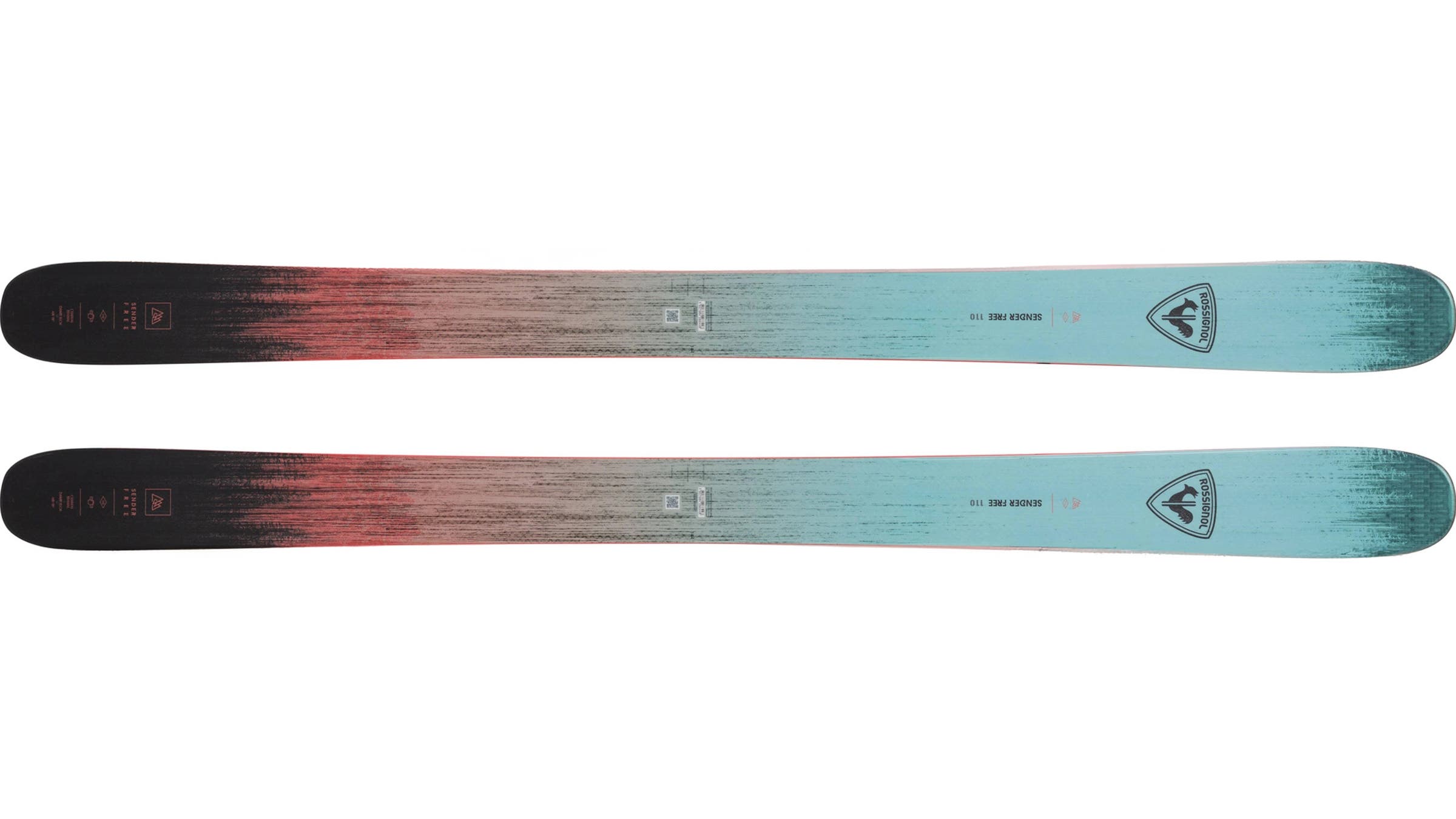
Rossignol Sender Free 110
Dimensions: 140-110-133 mm
Available lengths: 160, 168, 176, 184, 191 cm
Pros and Cons
⊕ Powers through variable snow
⊕ Can handle high speeds
⊗ Less responsive in tight terrain
⊗ Requires a strong skier
Returning unchanged for this season, the Rossignol Sender Free 110 has cemented its place in the powder ski category over the past few years for its ability to charge through any condition. It’s one of the narrower powder skis we tested, but don’t let its unassuming 110-millimeter waist fool you. Generous tip and tail rocker keep it afloat in deep snow, while a springy poplar wood core and Titanal underfoot smooth vibrations and maintain stability at speed and during unexpected turbulence. “A great ski for an expert-level freeride skier who likes big lines and wants something both maneuverable and stiff,” said one tester. “It pivots underfoot but can also plow through a choppy open bowl with ease.”
We won’t beat around the bush—this ski demands a lot. “This is not a ski for a skier with a big ego and zero skills,” said one tester. Those looking for a cruisy powder ski might want to look elsewhere. But for those ready to ski fast and take chances, the Sender Free 110 will keep up (and then some).
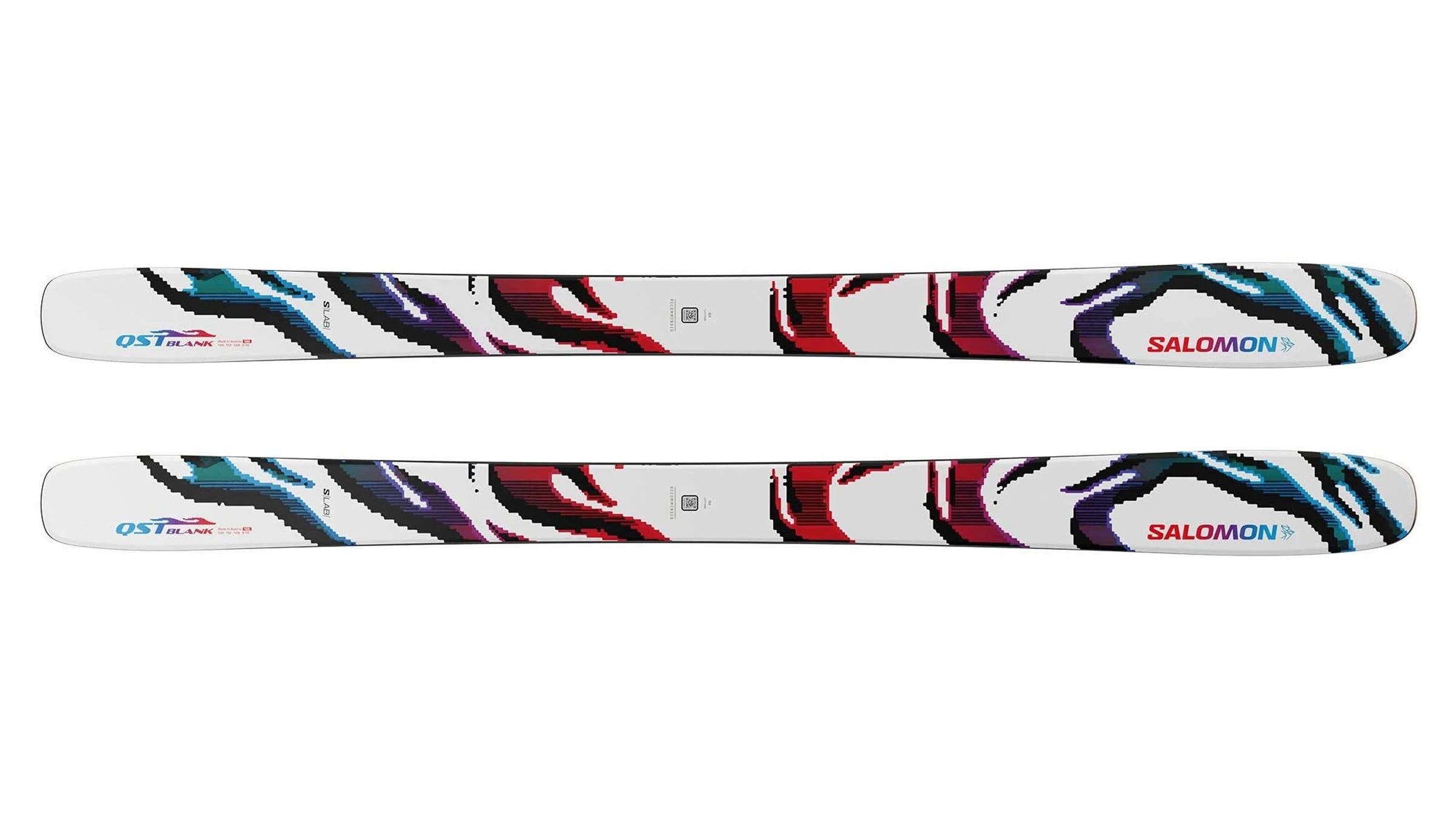
Salomon S/Lab QST Blank
Dimensions: 139-112-128 mm (186)
Available lengths: 170, 178, 186, 192 cm
Pros and Cons
⊕ Super smooth in choppy terrain
⊕ Dependable at high speed
⊗ Less nimble in tight terrain
⊗ Not the best flotation
Salomon gave the QST line a refresh last season to boost speed and stability in their trusted freeride series. The redesigned QST Blank keeps its 112-millimeter waist, but now features a stiffer tail, slightly longer turn radius, and a redesigned cork insert that smooths the ride in rough terrain.
“It’s a perfect medium between a softer, playful ski and a stiffer, chargy ski,” said one tester. “It holds up at high speeds, cutting through chop and popping off rocks, while still offering the maneuverability to pivot quickly in tight chutes and trees.”
The full poplar wood core preserves the light, springy feel skiers love about the previous QST Blank, paired with a single piece of cork and TPU in the tip and tail to minimize vibrations in variable conditions. In spite of its respectable 112-millimeter waist, it’s not the floatiest ski of the bunch. And while it handles high speeds like a champ, it sacrifices some nimbleness in favor of stability. If noodling around is your vibe, this probably isn’t the ski for you, but if you’re looking to drop cliffs and ski fast with confidence, look no further.
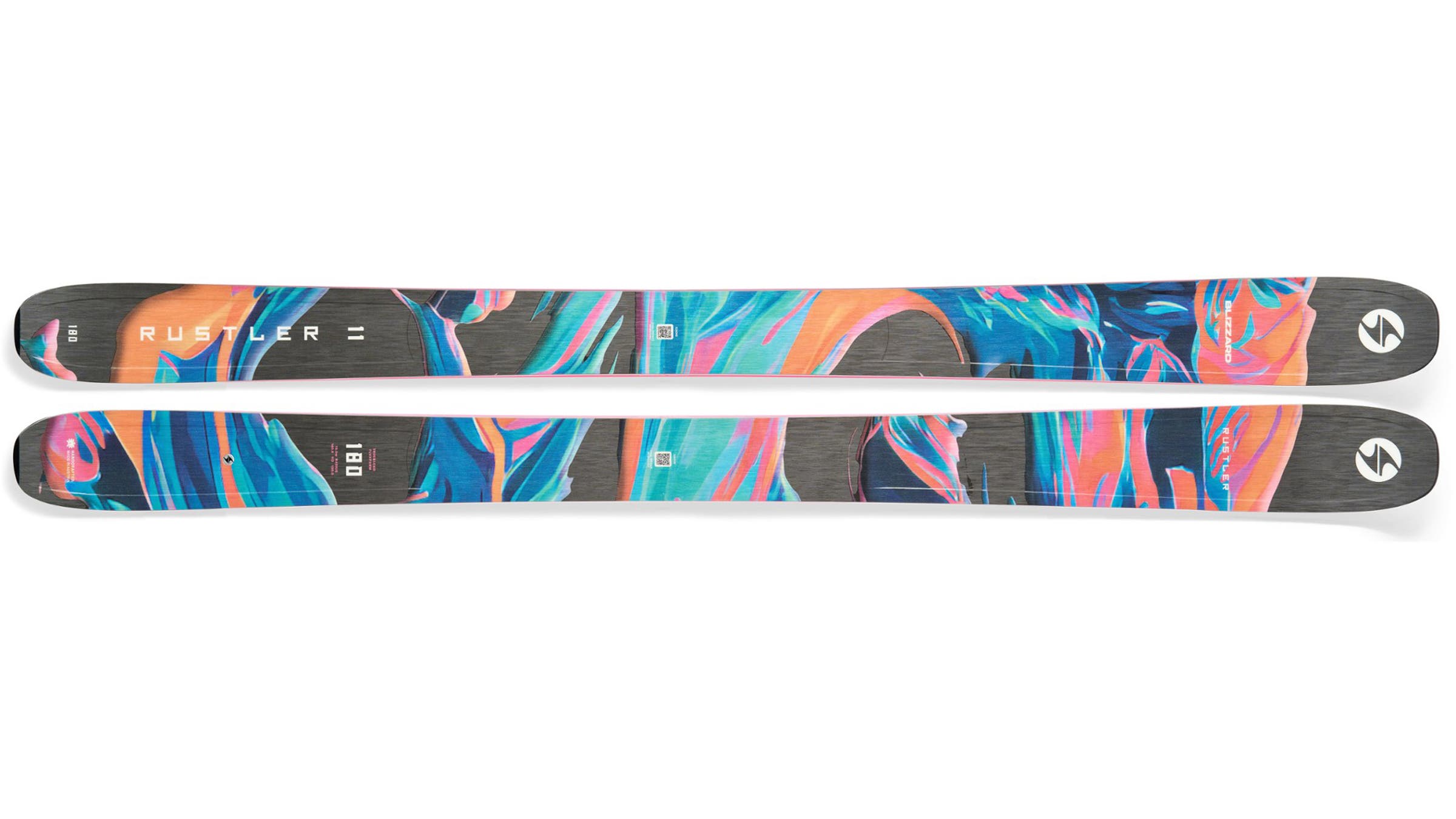
Blizzard Rustler 11
Dimensions: 142-114-132 mm (186)
Available lengths: 168, 174, 180, 186, 192 cm
Pros and Cons
⊕ Reliable in crud
⊕ Powerful and stable
⊗ Not very forgiving
⊗ Not playful
Ever a fan favorite, the Blizzard Rustler 11 returns unchanged this season except for new psychedelic graphics. And it once again made our list because it’s such an excellent deep-day charger for experts. The Rustler 11 features a stiff wood construction with Titanal around the perimeter, providing a solid platform for powering through chop and plenty of grip for rallying turns on firm snow. Its 114-millimeter waist is ideal for storm-day riding, though the smooth, planted feel comes at a slight sacrifice in flotation and playfulness. If you’re ready to push it, the Rustler 11 is eager to perform. “This is a really solid ski, but one that requires an active driver,” reported another tester. “Anytime I got lazy or backseat, the ski quickly reminded me to get my head in the game. Not recommended for someone who wants to put the ski on autopilot.”
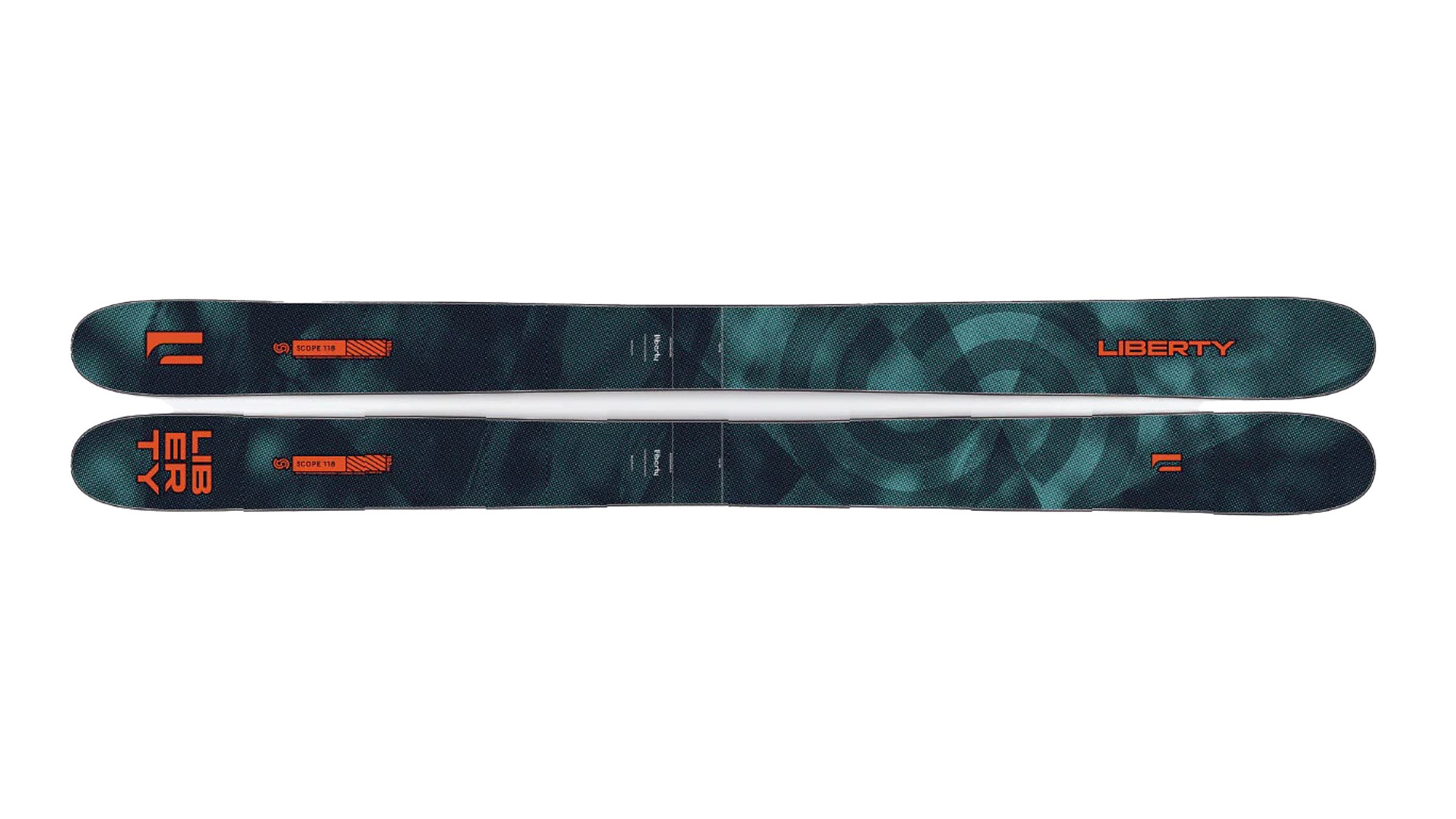
Liberty Scope 118
Dimensions: 146-118-135 mm
Available lengths: 182, 190 cm
Pros and Cons
⊕ Playful
⊕ Approachable for a wide variety of skiers
⊗ Not stable at speed
⊗ Limited length options
The all-new king of Liberty’s Scope collection, the Scope 118 impressed testers with its approachability and playfulness. Built with a lively poplar wood core, a phenolic plate for stability, and heavily rockered tips and tails, the Scope 118 is lighter and easier to turn than many skis on this list. It also floats and glides through deep days with ease. “The Scope 118 loves to play at medium speeds,” said one tester. “It’s nimble, but trustworthy when you get cliffed out and might need to air out and straight-line to the flats.” Testers noted that it was a bit unruly at high speeds owing to its lightweight construction, but otherwise felt it was approachable for a variety of ability levels. “It absolutely crushes in the tracked-out crud,” said another tester.
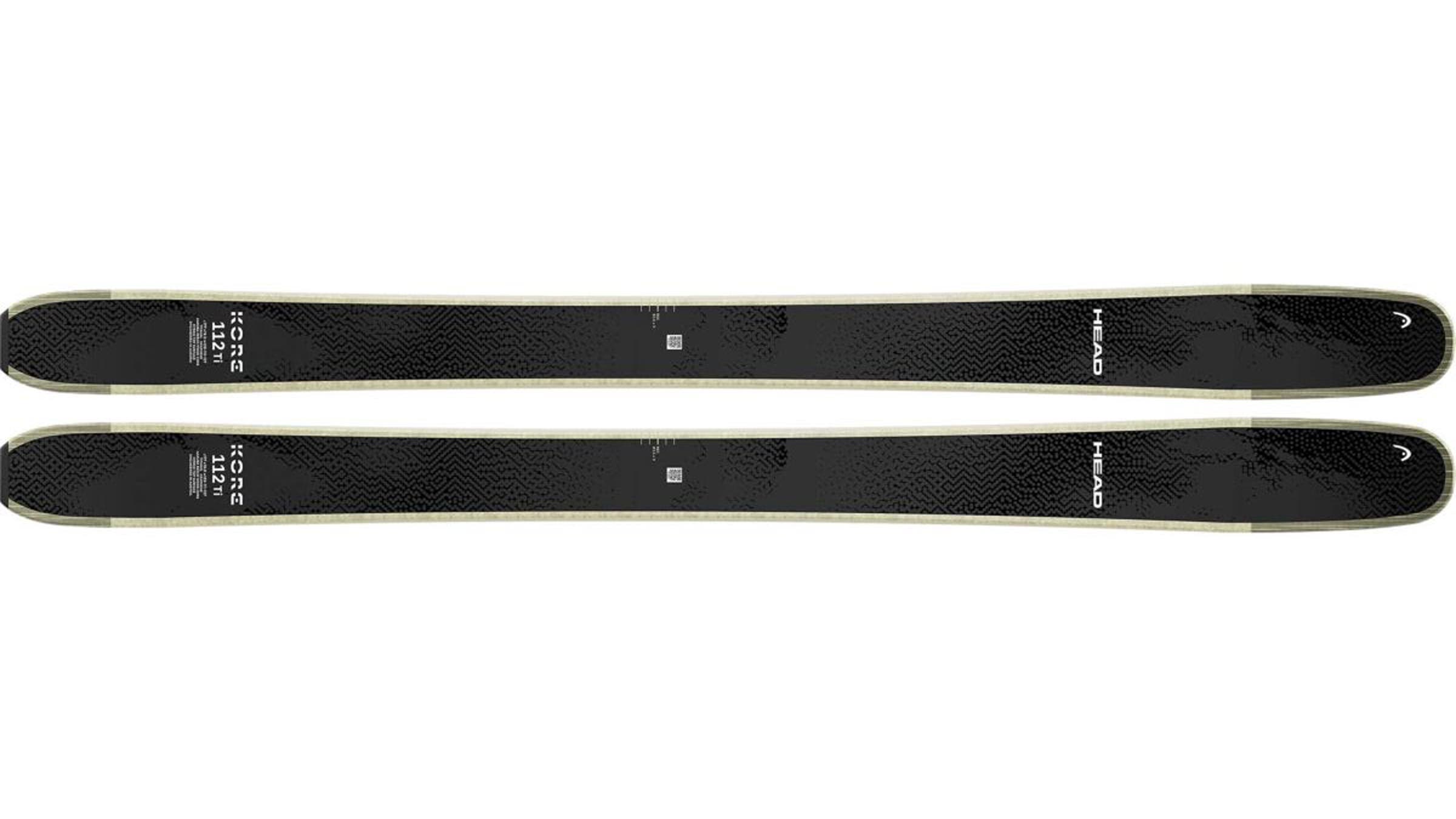
Head Kore 112 Ti
Dimensions: 140-112-128 mm (184)
Available lengths: 170, 177, 184, 191 cm
Pros and Cons
⊕ Strong and powerful
⊕ Stable at high speeds
⊗ Not forgiving
⊗ Mediocre float in deep snow
Head launches the all-new Kore Ti series this season, a beefed-up, metal-packed evolution of the old Kore collection. The Kore 112 Ti replaces the Kore 111, with two sheets of Titanal and a caruba-and-beech wood core that helps keep the ski more stable and planted than the previous iterations. “It was super dependable and strong when I needed it most, landing a five-foot drop on the ridge at Bridger Bowl into chopped up and heavy powder,” reported one tester. The 112-millimeter waist and rockered tip and tail are built for deeper days, though testers found that the aggressive nature of the ski didn’t favor flotation as well as some of the other skis in the test. Still, aggressive skiers and those with race backgrounds will appreciate how much this ski rewards solid technique. “It definitely requires an active driver,” said one tester. “This ski needs to be told what to do.”
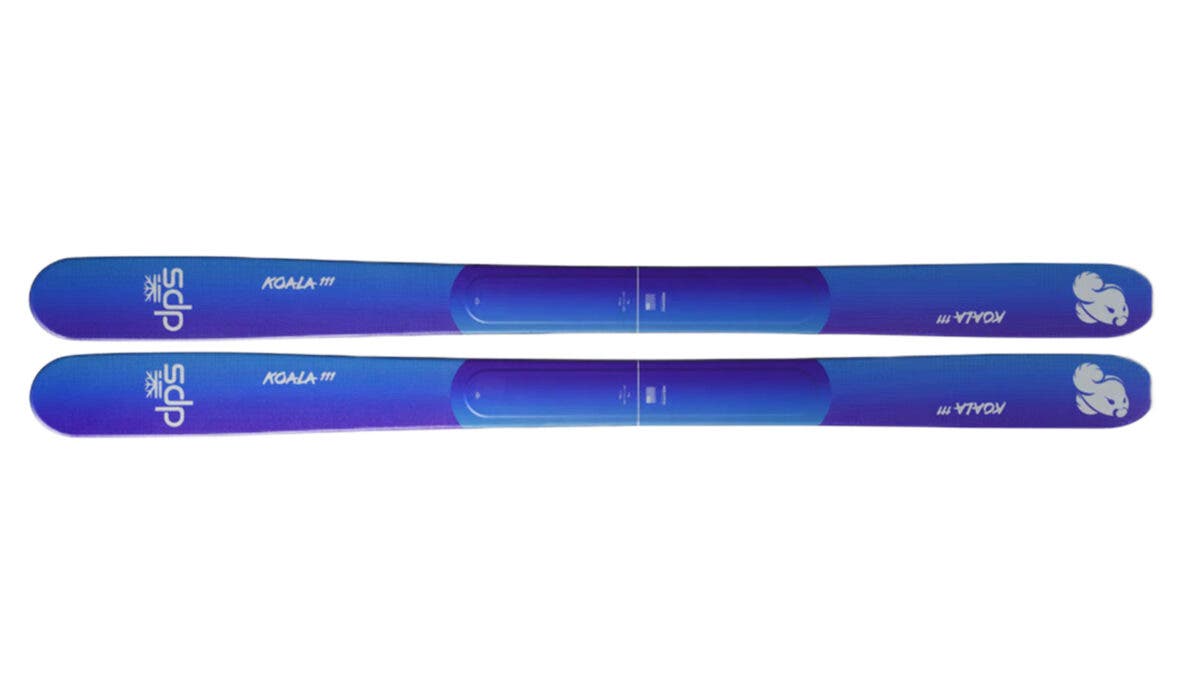
DPS Koala 111
Dimensions: 139-111-127 mm (184)
Available lengths: 176, 184 cm
Pros and Cons
⊕ Maneuverable and responsive
⊕ Floats well in deep snow
⊗ Chattery at high speed
⊗ Gets tossed around in choppy snow
The newest addition to DPS’ Koala family, the Koala 111 is a more powder-oriented big brother to the existing Koala 103 freestyle ski. With a smooth flex, 111-millimeter waist, and rockered tip and tails, float is the name of the game with the Koala 111. While testers agreed the Koala 111 isn’t exactly a high speed freeride ski—we got taken for a bit of a ride in choppy snow—they were impressed with how reliable it felt on firm snow at medium speeds. “The addition of carbon fiber kept them more stable than I expected,” said one tester. “Very playful in pow and soft corduroy.” The Koala 111 felt accessible for a variety of ski backgrounds, not just experts, and the relatively short turn radius (18 m in 184 cm) felt nimble in the trees. “A fun and playful ski for folks who rarely dip into steep, committing terrain,” said one tester. “It’s a total blast in wide open bowls.”
Best Powder Skis Comparison
See how the best powder skis of 2026 scored in individual performance criteria. SKI measures powder ski performance across eight scoring criteria, including flotation, playfulness, responsiveness, and crud performance, the most important criteria for a powder ski.
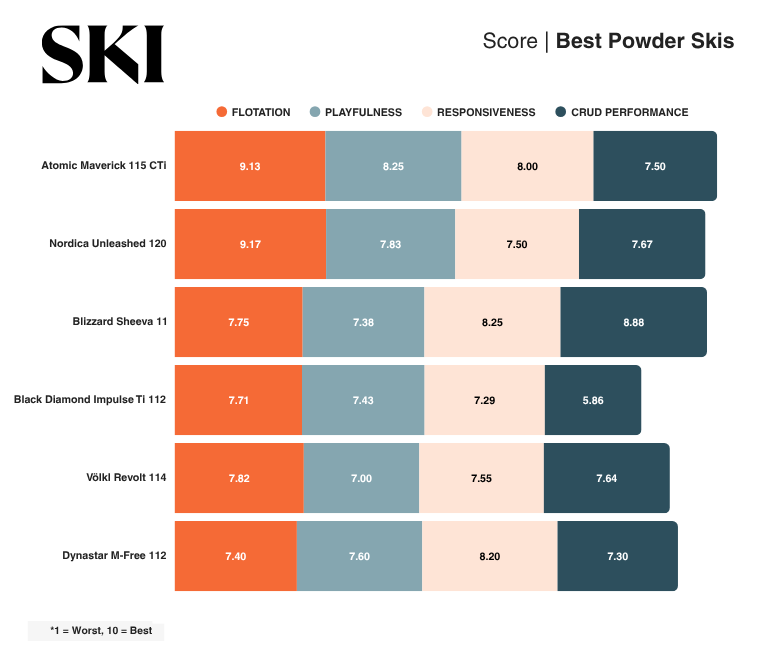
About SKI Test
- Skis tested: 17
- Testers: 10 expert skiers from the ski industry
- Location: Bridger Bowl, Montana
- Tester range: Ages 21–42 | Heights 5’4”–6’3” | Weights 125–250 lbs
Each year, SKI’s editorial team conducts one of the most rigorous and trusted ski tests in the industry. At SKI’s 2025 Powder Ski Test at Bridger Bowl, Montana, 10 experienced skiers tested 17 powder skis after a storm dropped 11 inches of fresh snow on the resort. To reduce subjectivity, all testers skied each model on the same day, in the same conditions, and submitted digital scorecards evaluating each ski across nine criteria:
- Versatility
- Flotation
- Stability at Speed
- Responsiveness
- Crud Performance
- Quickness
- Forgiveness
- Playfulness
When judging the best powder skis, we place the greatest emphasis on flotation and playfulness—two key indicators of a top-tier powder ski. The six winners on this list earned consistently high marks across all categories, especially those two. The skis included in the “More Skis We Recommend” section are models that excel in specific areas like crud performance or forgiveness, offering strong alternatives for skiers with specific performance preferences. Learn more about our testing methodology and scoring criteria here.
Why You Can Trust Us
Our ski reviews are the result of the largest, most rigorous on-snow test in the industry. We never charge brands to participate and don’t guarantee coverage—our annual SKI Test is a fully independent editorial project designed to deliver objective, in-depth reviews. Our expert testers include ski instructors, ski patrollers, ski shop owners, hardgoods buyers, ski technicians, and race and freeride coaches. We handpick this crew for their professional expertise and intentionally include a range of body types, ages, and home mountains to reflect the broader ski community. Bottom line: There’s no pay-to-play here—just honest feedback from people who know skis.
Frequently Asked Questions
What is a powder ski?
Generally speaking, powder skis are fat and designed to enhance flotation in deep snow . They tend to have 110-plus-millimeter waists, generous rocker profiles, and very large turn radii. While they float like a dream in soft snow, many powder skis can perform well in choppy snow as well, and a very special few can actually hold an edge on groomed terrain. For the most part, however, these skis are rarely defined as one-ski-quiver options and are instead used only when conditions warrant, e.g. the deepest of days.
What’s the best powder ski for experts?
Our expert testers named the Atomic Maverick 115 CTi the best powder ski of 2026. It’s exceptionally versatile and fun for strong intermediates and experts alike. Read the full review here. If you’re looking for a ski for the deepest days, also consider the Nordica Unleashed 120, which offers the best flotation in truly deep conditions.
What’s the best powder ski for women?
Our female testers named the Blizzard Sheeva 11 the best powder ski for women. With a women’s-specific construction and plenty of length options, women of varying ability levels (from strong intermediates to experts) can appreciate this ski’s flotation, playfulness, and versatility.
Who are powder skis for?
Any ski wider than 105 millimeters underfoot is best suited to a skier who gets to ski soft and deep snow more often than not. These wide skis are typically made of lighter materials, feature less metal in the core, and have less effective edge, meaning they’re not the best tools to handle hard snow, groomers, or bumps. Big boards will enhance any real powder day, but they may feel cumbersome in anything less than five inches of fresh snow.
How long should a powder ski be?
In general, it’s safe to size up with powder skis. Go with a ski that’s at least as long as you are tall. A longer powder ski will increase flotation and give you more effective edge to work with when you do ski on firmer snow. Shorter powder skis will feel more nimble than longer versions, but can also sometimes feel exceptionally short because of the increased amount of rocker profile powder skis feature. Learn more about rocker profile and how it affects performance.
What’s the difference between men’s and women’s skis?
In truth, most skis are unisex and not gender-specific. Many brands produce the ski with the exact same construction technologies for both genders, but often create two different top sheets to appeal to men vs. women.
A handful of brands (like Blizzard) are making truly women’s-specific skis, where the ski takes a woman’s physique into account when building the ski. Men and women can ski on the same ski but may want to choose different lengths depending on their height and their skiing ability.
More from the 2026 Winter Gear Guide
The Best All-Mountain Skis
The Best Carving Skis
The Best Frontside Skis






